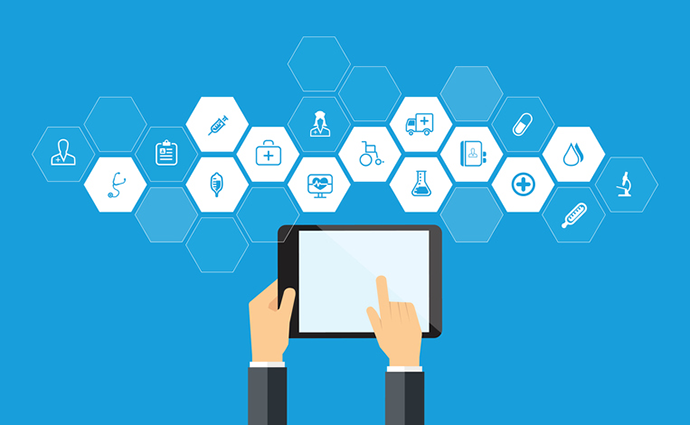Mount Sinai Extends Cancer Care to the Home With New Telehealth Program
The New York health system is launching a remote patient monitoring program that will allow care teams to track and communicate with patients at home through an mHealth wearable and telehealth platform.

Source: ThinkStock
- The Mount Sinai Health System is launching a telehealth program aimed at improving care management for cancer patients at home.
The New York health system will be sending high-risk oncology patients home with an mHealth wearable and keeping track of relevant vital signs through a remote patient monitoring platform that features round-the-clock monitoring by nurses. The platform, developed by Current Health, was funded in part by an award from the Federal Communications Commission’s COVID-19 Telehealth Program.
Cardinale Smith, MD, Mount Sinai’s chief quality officer for cancer services, says the platform will give care teams new insight into how to help patients in between their in-person visits for chemotherapy treatments and other services.
“This is about learning what needs to happen,” she says. “Being able to monitor people while they’re at home is very important.”
With the COVID-19 public health emergency simultaneously reducing in-person care and, through emergency state and federal actions, making it easier to use connected health platforms, health systems are trying out RPM for a variety of populations, from those infected with the coronavirus to patients with chronic conditions or post-discharge care routines who need guidance at home to follow doctor’s orders.
READ MORE: Cancer Docs Say Telehealth Improves Access to Care, Hedge on Cost
For Mount Sinai, cancer care was a novel use case.
“Remote monitoring … is very new to us in oncology,” says Smith. “Cancer care is, really, something like 30 different diseases,(each with their own care management protocols). We have to make sure we’re identifying the right patients and monitoring the right things at home.”
After sifting through about a half-dozen telehealth vendors, Smith said they chose a platform that could be modified to track specific data – in this case, temperature, pulse, blood pressure, respiratory rate and oxygen levels. Care managers then had to sit down and develop ranges for that data, create alarms for when any measurements hit those limits, and develop protocols for what to do when those alarms went off.
All while making sure patients in the program would be comfortable with a wearable that constantly tracks that data and automatically sends it back to their care team.
“It’s a very nuanced program,” says Smith, who had her mother test the wearable for comfort and ease of use. “That’s what we need” out of a telehealth program.
READ MORE: NCI Grants Help Cancer Care Centers Study Telehealth Effectiveness
And she’s hoping to modify the platform even more. She wants to fine-tune the technology to keep track of a patient’s white blood cell count – a critical data point for patients and providers wanting to avoid infections - and to integrate more with electronic health records platforms.
And with the technology giving providers a look into each patient’s home and daily routines, she would like to develop protocols to address social determinants of health.
This would be especially helpful given Mount Sinai’s location in the Harlem, with a large underserved population that struggles to access healthcare, pay for it and, ultimately, have faith in it. There’s a lot that needs to go into programs that not only improve care outcomes, but boost engagement and the relationship between provider and patient.
“Health systems aren’t set up to measure that,” she says. This includes telehealth platforms that can access and gather those types of observations but don’t necessarily know what to do with them.
“There’s a lot (to telehealth) that we can do if we know how to use it,” Smith concludes.
READ MORE: Geisinger Tests mHealth Platform for Chronic Pain Treatment
With the FCC telehealth grant good for one year, Mount Sinai is exploring several options to make this program sustainable. With reimbursements coming from CMS for telehealth use during the COVID-19 public health emergency, they’re looking to hire a couple of staff to help track and gather the data they need to prove long-term value.
For now, the health system is charting how to best use the 300 mHealth devices they have for the RPM platform. Who are the best candidates for the program, and how long should each be monitored? Early thinking calls for three months per patient, so the program could conceivably cover 1,200 patients in one year.
“We really are leading this novel care delivery platform,” Smith says. “There’s a lot of excitement here around being about to monitor our patients at home and also being able to communicate with them more often. We can do a lot with this.”
